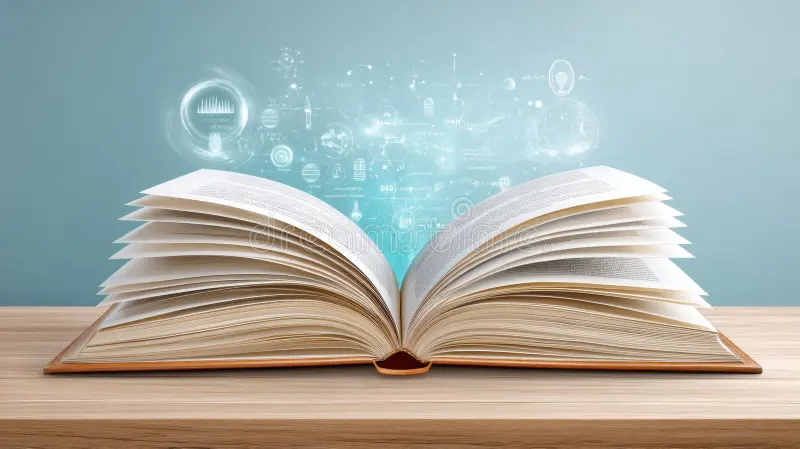Introduction
In today’s rapidly changing world, learning is evolving deeply. (DPA) New technologies and novel educational experiences are converging to change how learning is received, distributed, and most importantly, used. This look into the future of learning compels to take note of emerging trends and the future it promises – one where learning can be more accessible, engaging, and transformative.
The Rise of Digital Learning
Accessibility and Flexibility
Learning from anywhere anytime would be slogan of the digital learning platforms. Online classes, webinars and learning resources offer options to accommodate different learning styles and speeds. This flexibility allows for teach to students with an array of needs and schedules, regardless of location and time.
Interactive and Engaging Content
Technology makes it possible to deliver interactive and engaging educational content. They also feature video, quizzes, simulations to help learning and retention. These engaging tools transform learning and are targeted at the digital generation which seeks to interact with and understand concepts in a style that they connect with.
Personalized Learning Experiences
Adaptive Learning Technologies
Personalized learning models customize schooling for each learner, based on their specific learning needs and abilities. Adaptive learning technologies monitor performance data and dynamically adapt content. With this customization, learners are sufficiently met with challenges and supports as they work against their highest possible challenge level and are pulled up toward the challenge level that matches their potential and interest.
Data-Driven Insights
Learning analytics offer insight in learning patterns and progress. Teachers can utilize this data to pinpoint which areas students might need more support in or possibly some extension. This individualistic support paves way for a nurturing, catalyzer environment which support development and attainment, it enable one to interven at the right point and provide the appropriate support.
Collaborative Learning Environments
Virtual Classrooms and Communities
Learners across the globe can work together (in virtual classrooms and online communities) to make a difference. They can participate in group chats, share resources, and collaborate on projects. This worldwide cross-pollination of ideas provides deeper insight, a sense of belonging, and diminishes the limitations of place, all at the service of a more inclusive education.
Peer Learning and Mentorship
Peer learning and mentorships encourage the exchange of knowledge and support. Learners learn from others – drawing upon their experiences and expertise, thereby bettering their knowledge and abilities. This collective model promotes a continual learning and growing process, where each individual learns from others and together they develop.
Emphasis on Lifelong Learning
Continuous Skill Development
We live in an age of rapid transformation and learning is critical. It garanties that by education itself, individual are still supple and can compete in their careers. Micro-credentials and online certifications enable you to learn new skills so you can get ahead professionally and continue your progress toward personal and professional growth.
Cultivating a Growth Mindset
It’s this growth mindset from promoting lifelong learning that cultivates curiosity and resilience. Students who accept this view are more likely to initiate activities, seek out and accept challenges, and show persistence. This optimistic outlook helps to take you to both a satisfied personal and professional life and fuels innovative thinking and creativity.
The Role of Artificial Intelligence
Intelligent Tutoring Systems
AI is being more and more applied in the field of education. ITS give individualized feedback and guidance in kind of one-to-one tutorial. The power of these systems to improve learning is through the rapid and effective process of matching each student with what he or she uniquely needs to learn and precise support and motivation.
Automating Administrative Tasks
AI can automate those administrative tasks so that educators can spend more time teaching and engaging with students. Admin Automation simplifies grading, scheduling, communication, etc., to yield efficiency and reduced workload. This will allow educators to spend more to fostering meaningful engagement with students.
Innovative Learning Spaces
Design and Technology Integration
Cutting-edge learning environments are designed and technified immersive spaces that promote creativity and stimulate engagement. Changing seating, smartboards, and interactive nooks help to provide spaces that are flexible and dynamic for many different types of learning – active learning, hands on, movement and exploration. These are areas that enable enrichment in terms and curiosity and collaboration related to them.
Virtual and Augmented Reality
Virtual and Augmented reality can provide an immersive experience that can lead to a better understanding and usage. The continua of such technologies replicate the real world, offering practice moments to mediate the divide from theory to practice. Experiential Learning They provide understanding and stimulate innovation through experiential learning.
Conclusion
It’s bright for the future of learning: forward-thinking and open. As technology advances, education is growing more personalized, accessible, and interactive. Through their acceptance of these breakthroughs, educators and learners can realize what knowledge in action makes possible, creating a more knowledgeable, a more connected world. This journey to the future of learning holds infinite opportunities for everyone to learn, grow and develop in a rich learning environment.

